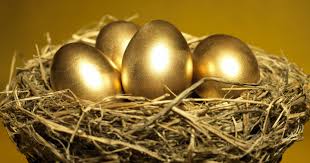Low interest rates are meant to stimulate the economy, which in turn is meant to create jobs, consumption and general happiness.
So why is this not happening in Australia, where official interest rates remain at historic lows?
The fact is that when interest rates go very low, any benefits get distorted across the economy, creating real trouble in some sectors.
Yin and yang
For example, property prices in some states are at ridiculous levels, lifting nominal wealth, but at the same time low interest rates are crucifying people who rely on their savings.

People approaching retirement age are now having to save more to try to build up a reasonable nest egg. In turn, this cuts consumer spending.
Former Reserve Bank of Australia (RBA) governor Glenn Stevens acknowledged before he left the job that low interest rates were a problem for these people.
“If the real economy can’t perform to provide real returns to capital, there is nothing to back higher yields on financial assets,” he said.
“In that world, nominal and real yields on bonds would remain extremely low, the income being generated by those working with the capital stock would struggle to fund the benefits required by retirees through dividends and returns on bonds and bank deposits. Governments may not receive all the revenue they need to service their obligations.”

Nest eggs being eaten
People in their retirement need to receive returns on their money, but at current interest rates, that is simply not happening. Instead of earning money to live on from the interest generated, their capital bases are being eroded to pay for everyday living.
There’s not much help coming from the property market either.
Property investors buying with the expectation of selling at higher prices are borrowing at low interest rates and increasing their leverage.
This skews their consumption spending to debt servicing rather than buying goods and services. The ratio of housing debt to household income has increased over the past three years to 186% from 166%, according to RBA figures.
Weak investment growth
In addition, the evidence that low interest rates are stimulatory is missing from the national accounts. The September quarter GDP (national output) figure dropped 0.5% on weak private and public investment. While this is unlikely to be repeated, it is concerning.
Private investment was unexpectedly weak across most categories in the GDP calculations. New building investment fell by 11.5%, construction investment fell by 3.6% and mining investment fell for the 12th consecutive quarter.

The National Australia Bank survey of business confidence for October also showed there has been a sustained decline in confidence and business conditions since May.
The issue for businesses is that weak consumption and a central bank that’s trying to talk the housing market down from the ledge so it doesn’t have to cut rates again are hardly confidence builders.
We need improved productivity to repair the economy but the real danger is that we may be too addicted to the debt drug to give it up.




